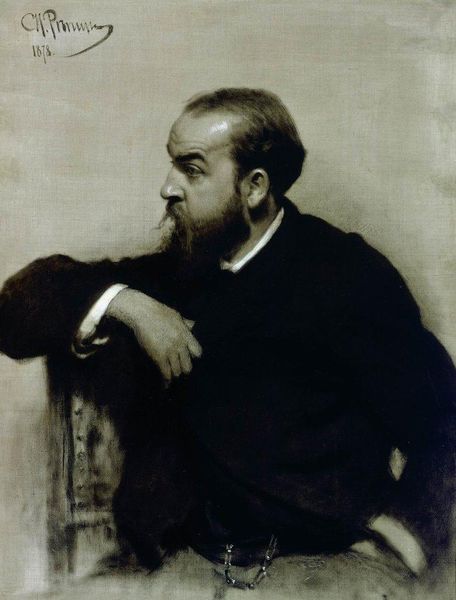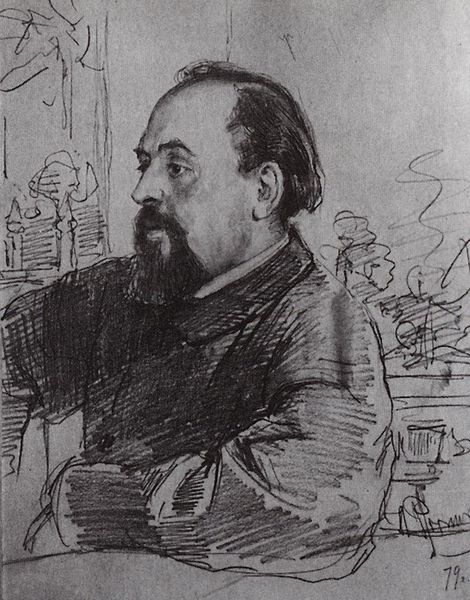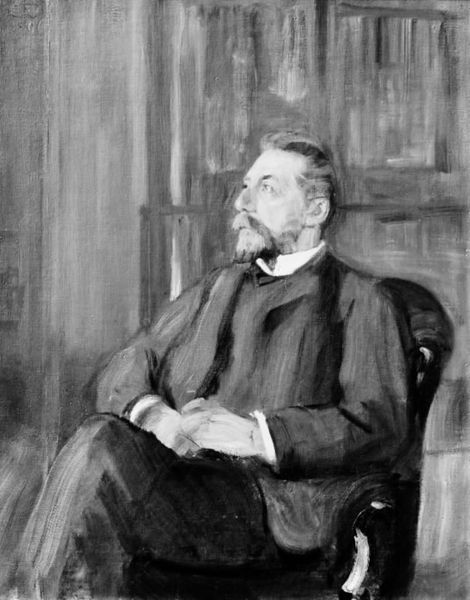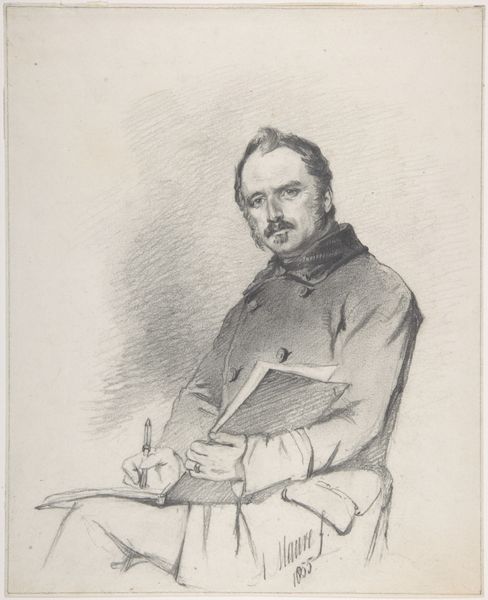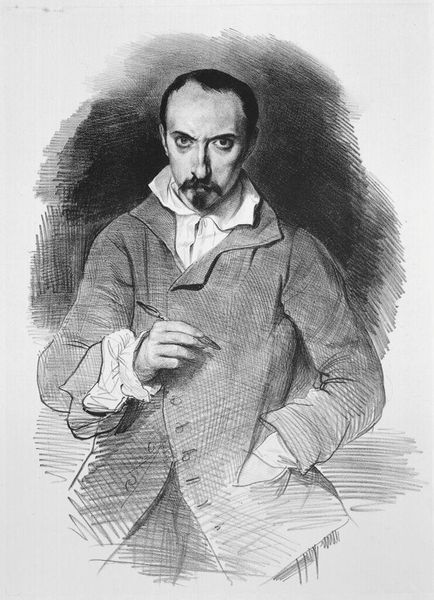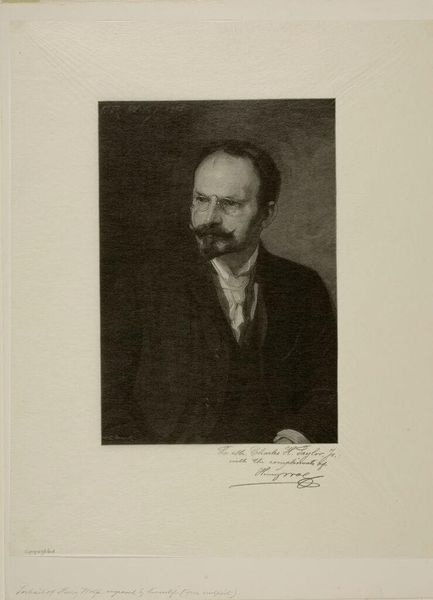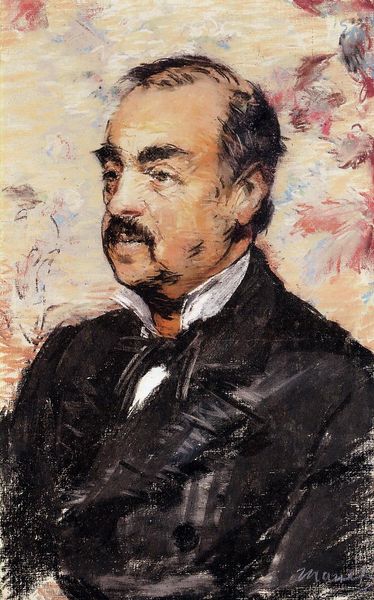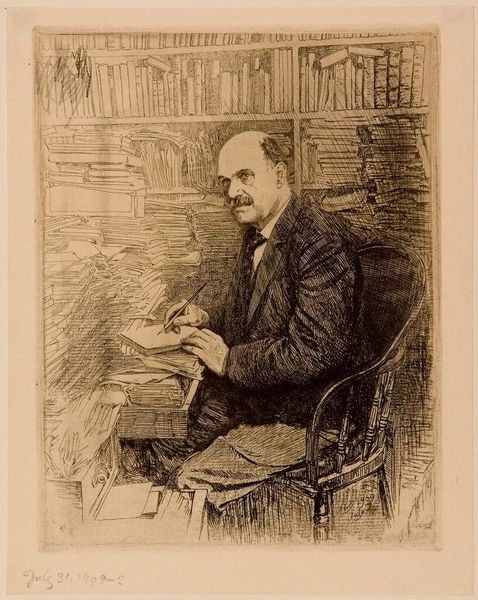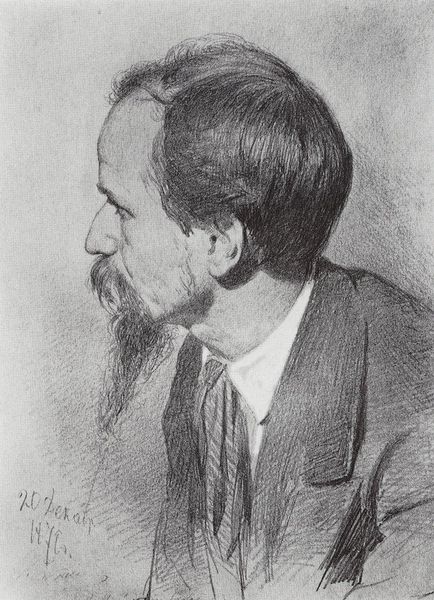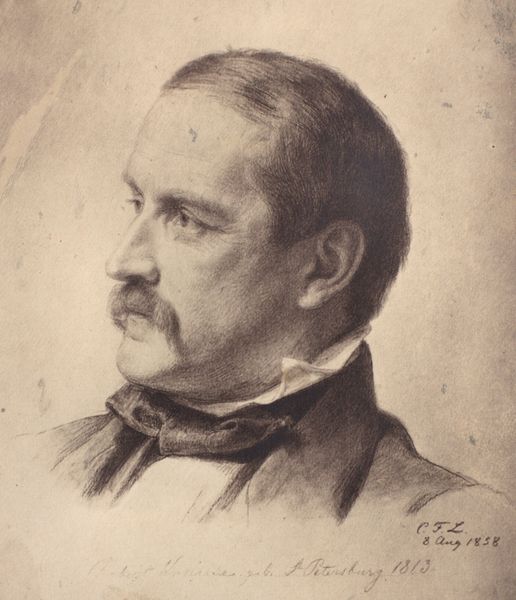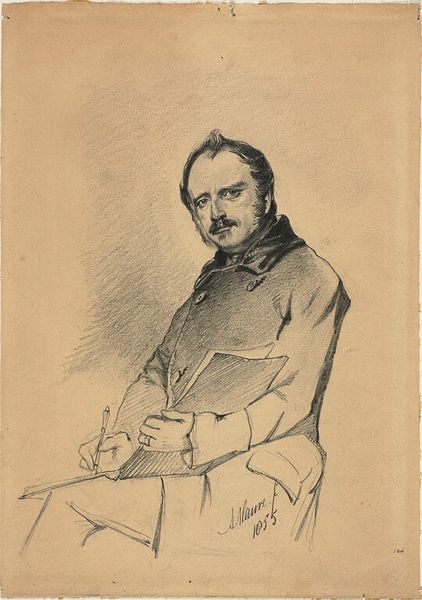
painting, impasto, charcoal
#
portrait
#
painting
#
charcoal drawing
#
impasto
#
russian-avant-garde
#
charcoal
Copyright: Public domain
Curator: Here we have Boris Kustodiev's "Alexander Benois," dating back to 1911. What strikes you first? Editor: The restricted palette creates a very somber mood. It feels weighty and serious. I wonder what choices influenced this decision? Curator: The portrait’s monochromatic approach is a potent symbolic choice, distilling Benois's essence down to fundamental elements. Perhaps Kustodiev aimed to capture the intellectual rigor of his sitter? The limited color could reflect Benois’ focused dedication to the arts and history. Editor: Or could the restricted palette be about economy? Russian avant-garde artists were known for ingenuity with limited resources. Was using mostly charcoal and a bit of impasto a pragmatic or aesthetic choice, or perhaps a combination of the two? How much did access to specific pigments shape art-making decisions? Curator: It's compelling to consider resource constraints influencing form, especially within the Russian avant-garde, but I see in Benois's pose—his hands clasped thoughtfully, his gaze directed slightly upward—a timeless representation of intellectual contemplation. Kustodiev, with the symbols surrounding Benois in his study, positions him within a lineage of thinkers. Editor: Right. You see tradition and legacy; I can’t help but consider the social realities in which these portraits circulated. Think of the availability of materials for the artist and for the patron, the economics behind creating likenesses, who was commissioning whom and why? It all affected choices regarding style, approach and medium. Curator: Interesting! While I'm reflecting on those social and material conditions surrounding this work, I’m equally stuck by how such specific conditions lead to the image’s continued relevance. It continues to offer us some sense of enduring inner life and artistic genius. Editor: Absolutely, and remembering its production—the where, when, and how—reveals not just an artistic creation but also a small lens into early twentieth-century Russian society and artistic processes.
Comments
No comments
Be the first to comment and join the conversation on the ultimate creative platform.
